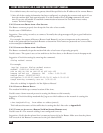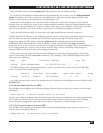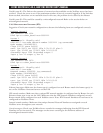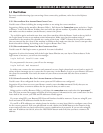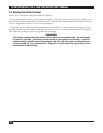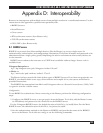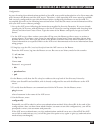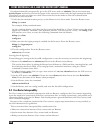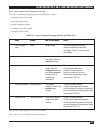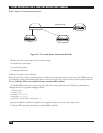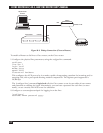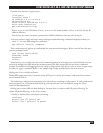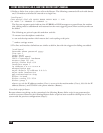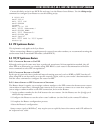
ASYNC ROUTER AR-P, AR-5, AND SYNC ROUTER USER’S MANUAL
108
If authentication fails unexpectedly, go to the ACE server and run sdadmin. Choose the menu item
Activity Report and look at the last two pages of the report for reasons why the login attempt has failed.
This report can give you clues as to what corrections need to be made to allow the authentication
method to be set to SecurID.
7. Verify that the desired modem port(s) on the Router are in client mode. From the Router, enter
dialup iface status
For example, dialup modem0 status.
On the resulting display, verify that the first word of the third line is “client.” Other values that might
appear are “inactive,” “demand,” and “demand_backoff.” If it does not say “client,” run config to set
this interface to a client, or enter the following command from the Router:
dialup iface client
config save
8. Make sure that the login prompt is enabled for dial-in users. From the Router, enter:
dialup iface logprompt on
config save
9. Test the configuration. From the Router, enter:
authent test clientname
Starting from the beginning
If something goes wrong in the SecurID configuration, it may be necessary to start from the beginning:
1. Remove the sdconf.rec and sdstatus.net files from the Router boot diskette.
This can be done either by taking the Router boot diskette to a DOS machine, running Stacker, and
then deleting the files in DOS, or by using ftp from a networked machine (using the “delete”
command to remove these files).
2. Use ftp in binary mode (bin) to copy a new version of /var/ace/sdconf.rec from the ACE server to
the Router’s \sdconf.rec.
3. On the ACE server, run sdadmin. Choose the item clients and then choose the item Re-initialize
client. Enter the name of the Router when prompted.
4. On the Router, enter the command
authent method local
5. On the Router, now run config modify, and redo the SecurID configuration.
D.3 Cisco Router Interoperability
For Cisco routers to successfully interoperate with our Routers, configure the Cisco routers depending
upon the method of connection (Ethernet, synchronous line, or dialup connection), and possibly use a
customized dialer script for the Router. You should possess a general familiarity with Cisco routers and
their command language.
Because of the complexity involved with Cisco routers, step-by-step instructions are not provided, so
use this information as a guideline.
This section describes interoperability considerations for:
• Ethernet connections between Cisco routers and our Routers
• Synchronous lines between Cisco routers and our Routers
• Dialup connections between Cisco router and our Routers



